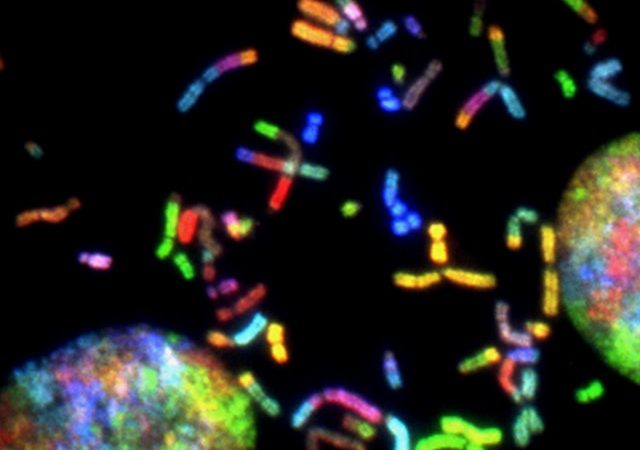Welcome to the fascinating world of genetics! Have you ever wondered why we inherit certain traits from our parents or how genetic mutations can lead to variations in a species? Genetics is a field that has intrigued scientists for centuries and continues to captivate us with its complexity. In this blog post, we’ll be breaking
Welcome to the fascinating world of genetics! Have you ever wondered why we inherit certain traits from our parents or how genetic mutations can lead to variations in a species? Genetics is a field that has intrigued scientists for centuries and continues to captivate us with its complexity. In this blog post, we’ll be breaking down the basics of genetics and exploring how inherited traits are passed on from one generation to another. So buckle up and get ready for an exciting journey through the fundamentals of genetics!
Gregor Mendel and the Science of Genetics
Gregor Mendel is often referred to as the father of genetics. He was an Austrian monk who conducted groundbreaking experiments on pea plants in the mid-19th century. Mendel’s work laid the foundation for our modern understanding of genetics.
Mendel’s experiments involved cross-breeding different varieties of pea plants and observing how their traits were passed down to subsequent generations. He discovered that some traits, such as flower color or seed shape, were dominant while others were recessive.
Through his meticulous analysis of thousands of pea plant offspring, Mendel developed his laws of inheritance which describe how genes are passed down from parents to offspring. His work revealed that genetics follows predictable patterns and can be quantified mathematically.
Despite initially being met with indifference by the scientific community, Mendel’s research eventually gained widespread recognition and revolutionized our understanding of biology. Today we continue to build upon his foundational discoveries in our study of genetics.
How Inherited Traits are Passed On
When we talk about how traits are passed down from generation to generation, we’re referring to the study of genetics. Gregor Mendel, an Austrian monk, was one of the first scientists to systematically study inheritance patterns in pea plants and laid the foundation for our modern understanding of genetics.
He discovered that certain traits were inherited independently of each other and followed specific rules. For example, a dominant trait will always be expressed over a recessive trait when both are present.
The process begins with reproduction – specifically meiosis – where genetic material is split into haploid cells which combine during fertilization to form a new organism with its own unique set of genes. Each parent contributes half their genetic information to their offspring.
Inherited traits can come from either parent or even skip generations entirely through recessive genes carried by carriers who do not express them themselves but could pass them on to their children.
It’s important to note that while our DNA provides us with a blueprint for life, it doesn’t necessarily dictate every aspect of who we are or what we become. Environmental factors such as diet and lifestyle can influence gene expression and lead to variations in physical appearance or health outcomes despite identical genetic makeup between individuals.
The Role of DNA in Genetics
The blueprint for life, DNA plays a crucial role in genetics. It contains all the information needed to create an organism’s traits and characteristics.
DNA is composed of four chemical bases: adenine (A), guanine (G), cytosine (C), and thymine (T). These bases pair up specifically – A always pairs with T, while G always pairs with C – creating the rungs of the DNA ladder.
The order of these base pairs determines the genetic code that is used to build proteins, which are responsible for many functions within cells. Proteins determine everything from eye color to hair texture.
Each person has their own unique pattern of base pair sequences, making them genetically distinct from everyone else. This is why siblings can have different physical traits even though they share genes from both parents.
Through processes such as replication and transcription, DNA is able to pass on genetic information from one generation to the next. This allows offspring to inherit specific traits and characteristics from their parents.
Without DNA there would be no genetics as we know it today. Its fundamental role in passing down inherited traits makes it a key aspect of our understanding of biology and evolution.
Mutations and Genetic Diversity
Mutations are changes that occur in the DNA sequence of an individual’s genes. These changes can be caused by factors such as exposure to radiation, chemicals or viruses. While some mutations may have negative effects, others can lead to genetic diversity and even beneficial traits.
Mutations play a crucial role in the evolution of species. They introduce new variations into the gene pool, which can then be passed down from generation to generation through sexual reproduction. Over time, these small variations accumulate and can eventually result in significant differences between individuals.
Genetic diversity is important because it allows populations to adapt to changing environments and helps prevent extinction due to environmental stressors such as disease outbreaks or climate change. Without genetic variation, populations would be more vulnerable to these threats.
It’s worth noting that not all mutations are advantageous; many are neutral or harmful. However, even deleterious mutations serve a purpose by providing raw material for natural selection to act upon.
Mutations are one of the driving forces behind genetic diversity and evolution. While they may sometimes have negative consequences for individuals who carry them, they ultimately contribute to the survival and adaptation of entire populations over time.
How Environmental Factors can Affect Genetics
It’s a common misconception that genetics solely determines our physical and behavioral traits. While our genes play a significant role, the environment we live in can also affect how these genes are expressed. Environmental factors such as diet, stress, pollution, and even social interactions can influence gene activity.
For example, studies have shown that a mother’s diet during pregnancy can impact her child’s risk of developing certain diseases later in life. Exposure to toxins or pollutants may also increase the likelihood of genetic mutations or alterations.
Stressful experiences can trigger changes in gene expression as well. In some cases, this is adaptive – for instance, increased cortisol levels during times of danger help us react quickly and effectively to potential threats. However, chronic stress has been linked to numerous negative health outcomes such as inflammation and weakened immune function.
Social interactions can also shape genetic expression through epigenetic mechanisms – chemical modifications that regulate whether genes are “on” or “off”. Studies on identical twins raised separately have shown that differences in lifestyle (e.g., smoking habits) lead to differences in DNA methylation patterns despite sharing identical DNA sequences.
While genetics is undoubtedly crucial for understanding human development and disease susceptibility, it’s important not to overlook the powerful impact that environmental factors can have on gene expression.
Conclusion
In summary, genetics is a fascinating field of science that has helped us understand how traits are passed down from one generation to the next. From Gregor Mendel’s experiments with pea plants to modern-day genetic research, we have come a long way in understanding our genetic makeup.
We now know that DNA plays an essential role in determining our inherited traits and can sometimes undergo mutations that lead to genetic diversity.
However, it’s important to note that environmental factors can also impact our genes and influence gene expression. It’s crucial to take care of ourselves and make informed choices about our lifestyle and environment.
Learning about genetics helps us appreciate the complexity and beauty of life itself. By unlocking the secrets of inheritance, we gain insight into what makes each individual unique while discovering the many ways we are all interconnected through generations past and present.























Leave a Comment
Your email address will not be published. Required fields are marked with *